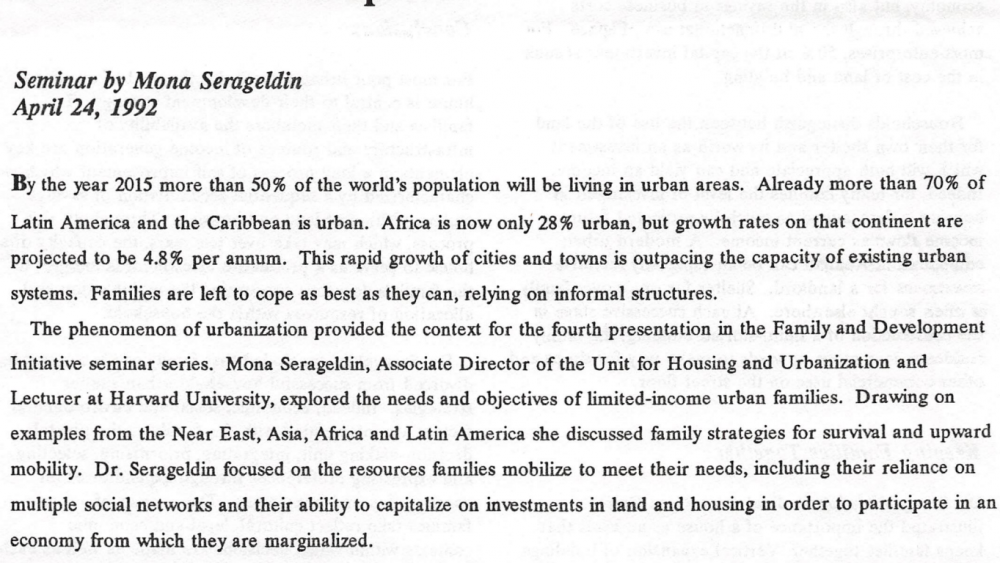Abstract
Dr. Mona Serageldin prepared the keynote presentation “The Dynamics of Neighborhood Transformation Long Term Trends and Immediate Responses to Turmoil and Civil Unrest” for the 2015 City Debates program on Other Gentrifications: Urban Change Beyond the Core at the American University of Beirut.
The Keynote speech and presentation by Dr. Serageldin examine the impact of spatial segregation and social exclusion on gentrification in the Mashreq countries of Egypt, Syria, Lebanon, Iraq, Palestine, and Jordan. Documents include presentation slides and transcript.
Excerpt
[Excerpt: Key Note text, Dr. Mona Serageldin, Page 1]
“Gentrification, within or outside the urban core, conjures images of forced displacement, eviction and marginalization of poorer segments of society. However, when discussing gentrification it is important to distinguish between spatial segregation and social exclusion and between diversity and social mixity. Each of these concepts involves a different perspective on urban space. Furthermore, except in cases of clearance and redevelopment, changes in the structure and morphology of urban areas, entail longer term processes which start slowly, accelerate and reach a tipping point. Taking into consideration the time frame often alters perspectives and viewpoints.”
“Social and economic change at the neighborhood level is an inherent component of urban growth. Over time, the regional context has shaped the drivers of transformation processes. Historically, ruling elites eager to display their power, wealth, and status built exclusive precincts outside the urbanized area inhabited by the commoners, a diverse population with a wide range of economic means and social standing including different ethnicities and religions. Later, the desire of colonial expatriate communities to replicate their own living environment introduced a trend towards exclusive suburban extensions. The regulatory controls included in the charters and by laws of the companies which developed these suburbs and the boards running the select amenities tended to collapse from the mid-1960s on as the colonial era came to an end and massive capital infusion in urban real estate altered the dynamics of growth.”
“In labor sending countries, remittance-driven urbanization, formal and informal, sustained by high rates of household formation and pervasive housing shortages, sent land values skyrocketing beyond the affordability of many among the middle classes. It accelerated the proliferation and subsequent densification of informal settlements and sharpened class differentiation within them.”
See related I2UD projects below
| Project Year: | 2015 |
| Project Type: | Presentation |
| Geographic Regions: | Beirut, Lebanon (Program Location) / Egypt / Syria / Lebanon / Iraq / Palestine / Jordan |
| Reports: | City Debates 2015: (Keynote Presentation, Dr. Mona Serageldin, March 2015) City Debates 2015: (Keynote Text, Dr. Mona Serageldin, March 2015) |
| Authors: | Mona Serageldin; Barbara Summers |
| Sponsors: | American University of Beirut |
| Categories: | Informal Settlements and Urban Upgrading |
| ID: | 2015_03_001 |
Related I2UD Projects
Related I2UD Photograph Galleries


